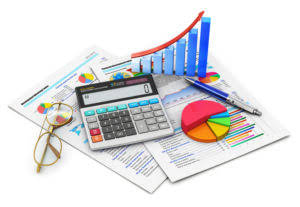
The gross receipts from multiple businesses must be aggregated where they meet a “controlled group†ownership test or an affiliated service group test. A controlled group generally exists when there is greater than 50 percent common control (based upon identical ownership of five or fewer individuals, estates, or trusts) among each business. Keep this in mind, https://www.bookstime.com/articles/the-accounting-equation-may-be-expressed-as for when you go to make a change in the current period. The difference between the two balances is the adjustment that needs to be addressed in the year of change. Also, management should explain the reasons for the conversion to stakeholders like investors and lenders. This will help them comprehend any changes in financial figures and avoid misinterpretation.
- As money is earned it is categorized as assets or liabilities on the balance sheet.
- One is that doing so puts their accounting records in compliance with the applicable accounting framework, which is usually Generally Accepted Accounting Principles (in the United States).
- Furthermore, it is also important to consider the fact that several different heads of accounts are included in the accrual basis of accounting, not the cash basis of accounting.
- Likewise, if an expense is incurred it is only recognized when cash is paid.
- Some examples of prepaid expenses include monthly rent, (when the entire lease is paid upfront), insurance policy premiums which cover six months or a one-year period, or bulk purchases of office supplies.
Step-by-step guide on converting from accrual basis to cash basis accounting
It gives a clearer picture of revenues, expenses, and the overall financial performance during a specific period. The cash basis method of accounting recognizes income when it is received and expenses when they are paid. This means that income is recognized when cash is received and not when it is earned. Likewise, if an expense is incurred it is only recognized when cash is paid. One of the most complicated concepts to understand in accounting is converting a set of accrual based books for a cash basis tax return. This article is intended to cover basic concepts of an accrual to cash conversion and discuss how to properly report business income on a cash basis when given a set of accrual basis books.

ERP Selection Guide and Checklist: Find the Perfect ERP for Your Business
Once you have a clear understanding of your current accounting records, the next step is to determine your specific accrual conversion needs. This will involve identifying adjustments that need to be made to your financial statements to align with the accrual accounting method. SOX introduced more stringent regulations and required public companies to adhere to accrual basis accounting for their financial statements. It reinforced the importance of accurately capturing transactions and maintaining transparent financial records.

The difference between cash and accrual accounting
Under the cash basis method, revenue is recorded when cash is received, whereas under the accrual basis, revenue is recorded when it is earned, regardless of when the cash is actually received. With accrual accounting, remember to report money as it is earned or incurred. As well as the double-entry method, where each transaction has two or more entries.

Add any money that has been incurred or prepaid to their corresponding accounts on the balance sheet. Most importantly, you will be able to track your finances from year to year. Most software programs will start you out with a basic chart of accounts. Their software comes with an intuitive default accrual accounting system. On Form 3115, you’ll need to report changes to income on a 481 Adjustment Summary. This shows how specific items that affect income are going to be treated during your accounting method conversion.
- Some cash payments may relate to assets that have not yet been consumed, such as rent deposits.
- Items such as payroll expense may be earned by employees during the last weeks of the year, but not paid until after year end.
- However, it does not provide an accurate representation of a company’s financial position, given that it fails to account for outstanding receivables or payables.
- Under accrual basis, record at cost or market value, whichever is lower.
- If you’re considering a cash to accrual method change, you’ll need to think through the process ahead of time.
This can lead to increased confidence and trust among investors and creditors, potentially leading to better financing conditions and investment opportunities. These differences are crucial for businesses as they grow and seek more accurate financial reporting and compliance with financial standards. Say you started your business in 2021 and used the cash basis of accounting. By following these steps, companies can how to convert accrual to cash effectively assess the outcomes of their conversion to accrual accounting and ensure they maintain compliance with the necessary reporting requirements. In this example, the company capitalizes the equipment cost of $20,000, and the annual depreciation expense under the straight-line method would be $4,000 over five years. This depreciation expense would be recorded on the income statement under accrual accounting.
Defining Cash Basis Accounting

Building an Accurate Chart of Accounts
- Converting from cash basis to accrual basis accounting requires recording adjusting journal entries.
- Cash basis accounting records financial transactions when they are paid or received in cash.
- Granted, they all won’t apply to every entrepreneur, sole proprietor, or wide-eyed business person out there, but they can help you acclimate as you wade into the accrual accounting waters.
- Or your small business isn’t so small anymore, has outgrown cash accounting, you’re looking to sell, get a loan, or a seemingly endless list of solid reasons to convert from cash basis to accrual basis.
- Accrual basis accounting is a common practice used by businesses to keep track of financial transactions.
Добавить комментарий